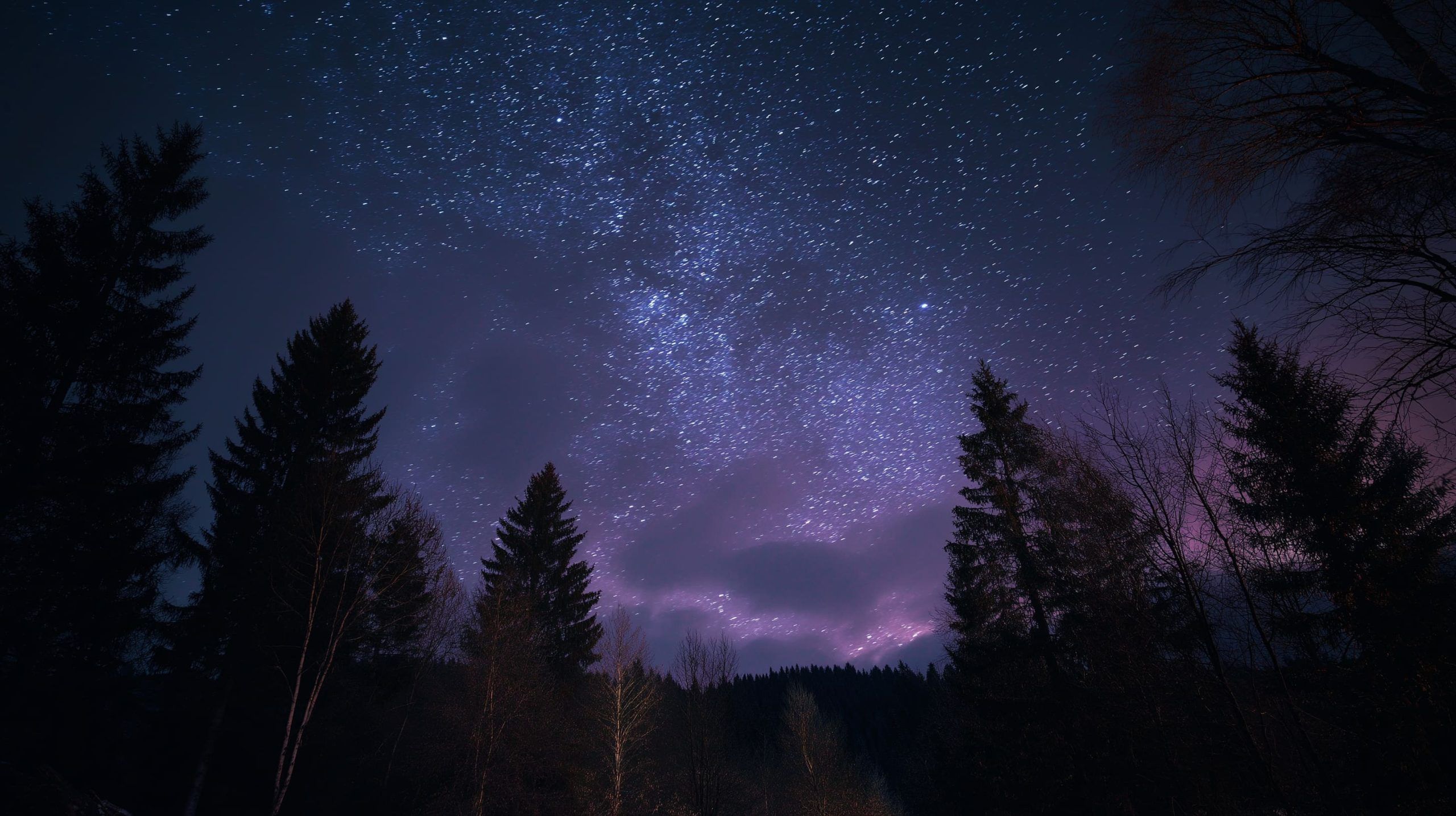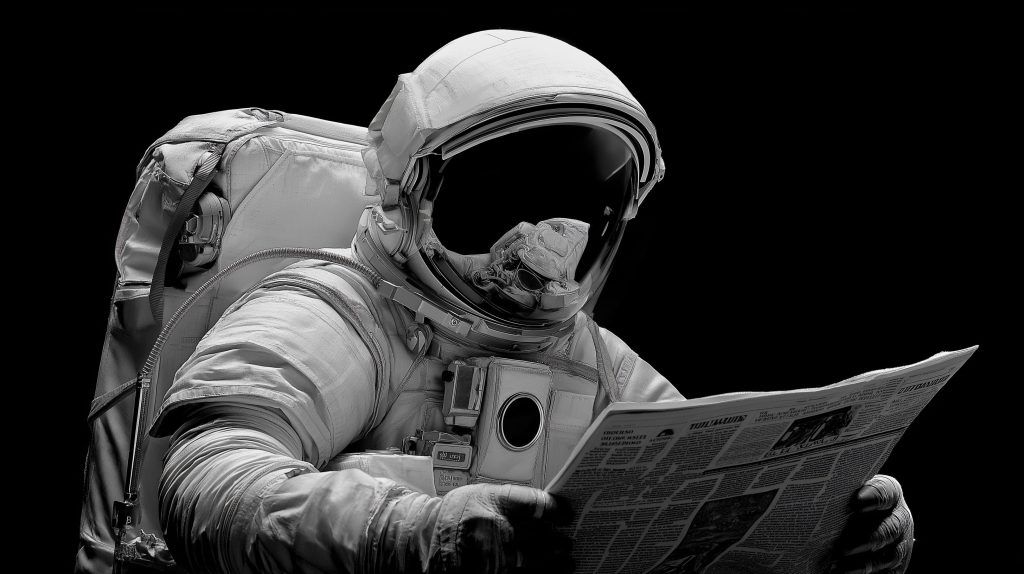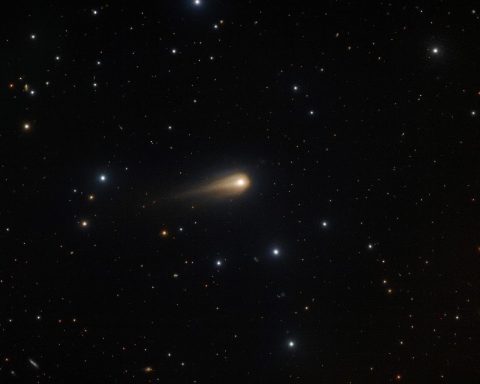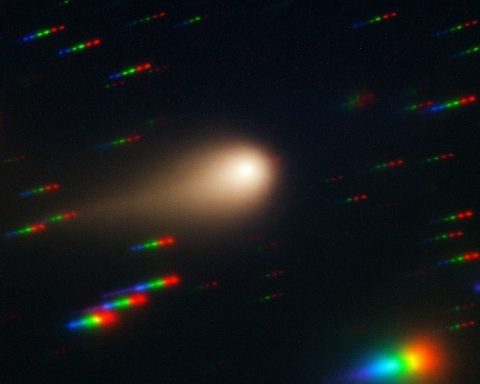- Quiet space weather: NOAA’s Space Weather Prediction Center (SWPC) forecasts calm to mildly unsettled conditions on Sept 29–30 (planetary Kp ≤4) [1]. The official 3-day outlook states “No G1 (Minor) or greater geomagnetic storms are expected” on those dates [2] [3].
- Minor radio effects: There is a ~55% chance of minor R1–R2 solar radio blackouts each day, driven by occasional M-class flares [4]. No significant radiation storms (S-class) are foreseen.
- Aurora confined north: Any Northern Lights will be limited to very high latitudes (above the Arctic Circle) [5]. Mid-latitude regions should not expect visible auroras.
- Meteor activity low: The only active shower is the Southern Taurids (up to ~3 meteors/hour around local midnight) [6]. The Orionid shower has just begun but is weak (<1/hour). Sporadic meteors (~10/hour pre-dawn in the Northern Hemisphere) will dominate [7].
- Satellite events: SpaceX launched a batch of Starlink satellites on Sept 28; the resulting satellite “train” may be visible after sunset or before sunrise [8]. The ISS will have dawn/dusk passes (check NASA’s Spot the Station).
- Comet SWAN rising: Comet C/2025 R2 (SWAN) is now ~magnitude 5.9 and appears low in the western twilight. Under dark skies it may be glimpsed with binoculars [9].
- No major reentries: No significant space junk reentries are expected on Sept 29–30. Recent deorbiting debris (mainly older Starlink sats) fell on Sept 23–26 [10], with none slated for this weekend.
- Normal operations: NOAA and space agencies issue no special warnings. Communications and power systems should operate normally (any HF radio glitches will be minor [11]). Skywatchers should simply enjoy the sights (while monitoring official updates for changes).
Space Weather Forecast
Space weather experts agree: late September will be mostly uneventful. NOAA’s SWPC issued a 3-day forecast on Sept 29 predicting only quiet to unsettled geomagnetic conditions (Kp indices up to 4) [12]. In its rationale NOAA explicitly notes “No G1 (Minor) or greater geomagnetic storms are expected” on Sept 29–30 [13]. EarthSky’s “Sun News” bulletin echoed this outlook, describing Sept 29–30 as “Quiet to unsettled” as the effects of a coronal-hole high-speed stream (CH HSS) wane [14].
Space.com’s aurora live-blog (Sept 25 update) had warned that a small solar wind boost over the weekend might briefly push conditions toward a G1 storm, possibly extending auroras “farther south than usual” into northern Scotland and high-latitude North America [15]. However, forecasters still expect any enhancements to fizzle out by Sept 29–30. In practice, this means any aurora displays will be faint and confined to polar regions. As Space.com notes, aurora activity is expected to “stay mainly confined to locations above the Arctic Circle, according to NOAA’s SWPC” [16].
Solar activity is moderate. A few C-class solar flares and occasional M-class flares have occurred, but no Earth-directed CMEs (coronal mass ejections) have been confirmed [17]. NOAA assigns only ~1% daily odds to any radiation storms (S1), and a 55% chance each day of R1–R2 radio blackouts [18]. In practical terms, this means that aside from the slight chance of brief HF radio interference (see below), space weather impacts will be minimal. NASA scientists stress that space weather can affect “spacecraft, astronaut safety, radio communications, GPS, and even power grids” [19], but for Sept 29–30 the risks are very low.
Aurora & Communications Impact
Aurora hunters should head far north this weekend. With Kp below 5, any Northern Lights will be seen only at extreme latitudes. Expect glows around magnetic midnight in Alaska, northern Canada, Greenland or Scandinavia; mainland U.S. and Europe are unlikely to see anything. Space.com’s forecast emphasizes that even if a minor storm happens, auroras would be mostly limited to those high-latitude zones [20] [21]. (Skywatchers at mid-latitudes will see dark clear skies instead.)
Geomagnetic conditions this weak have negligible effects on most technology. NOAA’s space weather scales note that an R1 radio blackout (the mildest category) causes only “weak or minor degradation of HF radio communication” and very brief navigation blips [22]. GPS and satellite links will be essentially normal, and airlines are not issuing any extra cautions. On the power grid side, G1 storms can induce small geomagnetic currents but are unlikely to trigger outages at this level [23]. In short, emergency and utility services have no new alerts: monitors will simply continue the routine. As one NOAA analyst put it, aside from aurora enthusiasts, most people “should expect normal conditions” through Sept 30 [24] [25].
Meteor Showers & Viewing Tips
Stargazers have only a modest meteor show this weekend. The Southern Taurids shower is active (Sept 23–Nov 12), but it is weak – peaking at roughly 3 meteors per hour around local midnight with a radiant in Pisces [26]. The Orionids (from Halley’s Comet) have just begun but are very faint now (<1 meteor/hour) and won’t peak until late October [27]. Thus observers will mostly see random “sporadic” meteors – perhaps ~10 per hour in a dark sky before dawn (Northern Hemisphere rates) [28].
Viewing will be hindered by the Moon. A waxing gibbous Moon (first quarter on Sept 29) will brighten the sky significantly [29]. This means many faint meteors will be washed out. To optimize chances: pick a very dark location well away from city lights, let your eyes dark-adapt (about 20–30 minutes), and watch between midnight and dawn. Lie back and look up toward the Taurids’ radiant (in Pisces, late at night) if you want that shower. Report any unusual fireballs to meteor networks (the American Meteor Society encourages citizen reports).
No large meteor outbursts are expected. All major showers this time of year are low-intensity. In normal weather you might spot a couple Taurids or random space dust per minute at best, but don’t expect dozens. Binoculars or cameras can help catch meteors too faint to see by eye. Overall, this weekend’s meteor bulletin is: stay patient, enjoy the Milky Way if visible, and take shelter from city glow – the show will be subtle.
Satellites, ISS & Comets
Skywatchers should also note human-made satellites and the new comet. On Sept 28 SpaceX launched 24 Starlink broadband satellites (Falcon 9 at 23:32 UTC) [30]. In the nights immediately following, look for a “train” of fast-moving lights in the sky just after sunset or before dawn – Space.com calls Starlink’s constellation a “bright, fast-moving line of lights” in the sky [31]. Check apps or sites for Starlink train predictions (they tend to be visible in the first days after launch). Meanwhile, the International Space Station continues its routine twilight passes. NASA reminds that all ISS flyovers occur within a few hours of sunrise or sunset (when sunlight glints off it) [32]. Use NASA’s Spot the Station or other tracking tools for exact times in your area.
Beyond planned launches, no uncontrolled debris reentries are expected Sept 29–30. The Aerospace Corporation’s reentry database shows several deorbiting Starlink satellites earlier in September (Sept 23–26) [33], but nothing is scheduled for this weekend. Occasionally small fragments burn up unannounced – if you see a fireball, local astronomy networks or even news outlets may provide an explanation (as they did for mid-September Starlink reentries on the U.S. West Coast).
Finally, a bright new comet is climbing into view. Comet C/2025 R2 (SWAN) was discovered in early September and is now about magnitude 5.9 [34] – near naked-eye limit. It lies in the western sky after dusk. Under very dark skies and using binoculars (or long-camera exposures), you may catch it as a small smudge or short tail. Northern observers will find it low in the twilight (between Mars and the star Zubenelgenubi in Libra [35]). Southern-hemisphere watchers have a better angle right now, but everyone can try around Sept 29–30 as a possible bonus to their skywatch.
Safety and Preparedness
Space weather agencies advise no special precautions for Sept 29–30 beyond normal observation safety. There are no new NOAA alerts, watches or warnings in effect (SWPC’s 3-day outlook covers all hazards) [36]. Pilots and broadcasters should continue routine checks – a minor R1 storm could briefly disrupt HF radio or GPS, but these effects will be fleeting [37]. Power operators remain at standard staffing; minor transformer currents or voltage flicker at G1 are the worst-case scenario.
For the general public: no geomagnetic or solar storm is predicted that would threaten health or electronics. Skywatchers should simply prepare for a cool fall night. Dress warmly, carry red-light flashlights so as not to ruin night vision, and allow eyes to adapt to the darkness when looking for meteors. Be aware that even though NOAA expects calm conditions, space weather can be unpredictable – you can always monitor NOAA/SWPC updates or magnetometer dashboards in real time if concerned.
In summary, late September’s skywatching offers subtle pleasures rather than spectacular storms. NOAA/NASA forecasts call for mostly benign conditions [38] [39]. Auroras will remain the province of the Arctic; minor meteors are the main “action.” Keep an eye on the SWPC and astronomy news feeds for any sudden changes, but otherwise enjoy a peaceful night under the stars this Sept 29–30.
Sources: NOAA/SWPC forecasts [40] [41]; Space.com aurora blog [42] [43]; EarthSky and space news updates [44] [45]; American Meteor Society; NASA advisories [46] [47]; Aerospace reentry data [48].
References
1. services.swpc.noaa.gov, 2. services.swpc.noaa.gov, 3. earthsky.org, 4. services.swpc.noaa.gov, 5. www.space.com, 6. ts2.tech, 7. ts2.tech, 8. ts2.tech, 9. earthsky.org, 10. aerospace.org, 11. www.swpc.noaa.gov, 12. services.swpc.noaa.gov, 13. services.swpc.noaa.gov, 14. earthsky.org, 15. www.space.com, 16. www.space.com, 17. www.space.com, 18. services.swpc.noaa.gov, 19. www.nasa.gov, 20. www.space.com, 21. www.space.com, 22. www.swpc.noaa.gov, 23. www.swpc.noaa.gov, 24. services.swpc.noaa.gov, 25. www.nasa.gov, 26. ts2.tech, 27. ts2.tech, 28. ts2.tech, 29. ts2.tech, 30. ts2.tech, 31. ts2.tech, 32. ts2.tech, 33. aerospace.org, 34. earthsky.org, 35. earthsky.org, 36. services.swpc.noaa.gov, 37. www.swpc.noaa.gov, 38. services.swpc.noaa.gov, 39. www.nasa.gov, 40. services.swpc.noaa.gov, 41. services.swpc.noaa.gov, 42. www.space.com, 43. www.space.com, 44. earthsky.org, 45. earthsky.org, 46. www.nasa.gov, 47. www.swpc.noaa.gov, 48. aerospace.org










